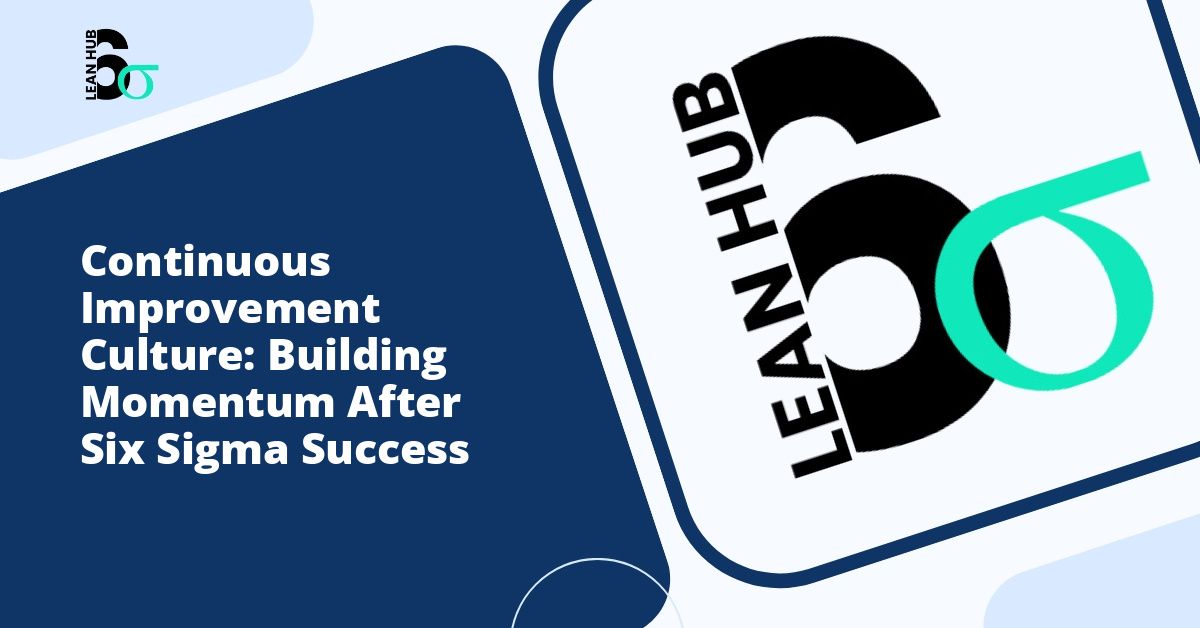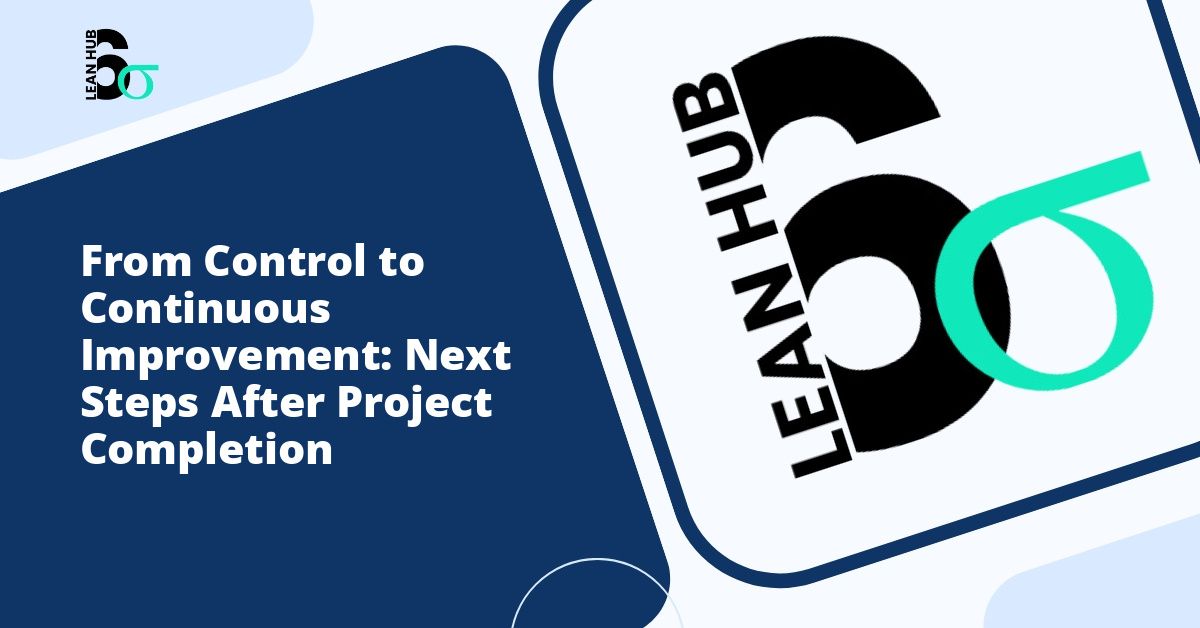Organizations that invest in Six Sigma methodologies often experience remarkable improvements in efficiency, quality, and customer satisfaction. However, the true challenge lies not in achieving initial success but in maintaining and building upon those gains. Creating a continuous improvement culture that extends beyond the completion of Six Sigma projects represents the difference between temporary wins and lasting organizational transformation.
Understanding the Post-Implementation Challenge
After celebrating the completion of successful Six Sigma projects, many organizations face a critical juncture. The energy and focus that drove the improvement initiative can dissipate as teams return to daily operations. Without deliberate effort to sustain momentum, companies risk regression to previous performance levels, effectively erasing the benefits gained through considerable time and resource investment. You might also enjoy reading about Standard Operating Procedures: Writing Instructions That People Actually Follow.
The key to preventing this backslide involves embedding continuous improvement principles into the organizational DNA. This transformation requires strategic planning, leadership commitment, and a systematic approach to maintaining engagement across all levels of the company. You might also enjoy reading about How to Train Process Owners for Long-Term Process Management Success.
Building on Lean Six Sigma Foundations
Lean six sigma provides more than just a problem-solving methodology. It establishes a framework for thinking critically about processes, identifying waste, and making data-driven decisions. Organizations that successfully transition to a continuous improvement culture leverage these foundations as springboards rather than endpoints. You might also enjoy reading about Before and After Comparison: How to Document Improvement Results Effectively.
The integration of lean principles with Six Sigma creates a powerful combination. While Six Sigma focuses on reducing variation and defects, lean methodology emphasizes eliminating waste and improving flow. Together, they create a comprehensive approach to operational excellence that can be applied continuously rather than episodically.
Establishing Ongoing Measurement Systems
Continuous improvement requires continuous measurement. Organizations must establish key performance indicators (KPIs) that provide real-time visibility into process performance. These metrics should cascade from strategic objectives down to operational activities, creating alignment throughout the organization.
Dashboard systems that display current performance against targets help maintain awareness and urgency. When teams can see how their daily actions impact organizational goals, they remain engaged in improvement efforts. This transparency also enables rapid response when performance begins to drift from desired levels.
The Recognize Phase: Celebrating and Acknowledging Progress
The recognize phase represents a critical component of sustaining improvement culture. Recognition serves multiple purposes beyond simply celebrating achievements. It reinforces desired behaviors, demonstrates leadership commitment, and provides tangible evidence that improvement efforts matter to the organization.
Effective recognition programs acknowledge both significant breakthroughs and incremental improvements. While major project completions deserve celebration, recognizing small daily improvements reinforces the message that continuous improvement involves everyone, not just dedicated project teams.
Designing Meaningful Recognition Programs
Recognition initiatives should be timely, specific, and authentic. Generic praise loses impact quickly, while specific acknowledgment of particular contributions demonstrates genuine appreciation. Organizations might implement multiple recognition approaches:
- Formal awards ceremonies for completed projects and significant achievements
- Informal acknowledgments during team meetings or through internal communications
- Peer-to-peer recognition programs that empower employees to acknowledge colleagues
- Leadership shout-outs that highlight improvement contributions during town halls
- Financial incentives tied to improvement metrics and participation
The most effective programs combine intrinsic and extrinsic motivators. While monetary rewards have their place, many employees value public recognition, professional development opportunities, and increased responsibility equally or more highly.
Creating Infrastructure for Sustained Improvement
Momentum requires more than enthusiasm. It demands organizational structures that support ongoing improvement activities. This infrastructure includes dedicated resources, clear processes for identifying and prioritizing opportunities, and mechanisms for implementing changes efficiently.
Establishing Improvement Teams and Champions
Successful continuous improvement cultures designate individuals responsible for sustaining momentum. These champions might include:
- Process owners accountable for maintaining and improving their areas
- Black Belts and Green Belts who continue leading improvement projects
- Department improvement coordinators who facilitate local initiatives
- Executive sponsors who provide resources and remove obstacles
These roles ensure that improvement remains a priority even when competing demands arise. Clear accountability prevents improvement from becoming everyone’s responsibility and therefore no one’s priority.
Implementing Structured Improvement Cycles
Rather than treating improvement as sporadic events, leading organizations embed regular improvement cycles into their operational rhythm. These might take the form of:
- Weekly team huddles to discuss performance and identify small improvements
- Monthly review sessions examining departmental metrics and improvement opportunities
- Quarterly strategic planning that includes improvement initiative prioritization
- Annual assessments of overall improvement culture maturity and effectiveness
This cadence normalizes improvement activities, making them routine rather than exceptional. Over time, questioning current practices and seeking better methods becomes habitual.
Developing Organizational Capabilities
Sustaining momentum requires continuously developing employee skills in improvement methodologies. Initial Six Sigma training provides foundation knowledge, but ongoing education ensures broader participation and deeper expertise.
Training programs should extend beyond technical tools to include change management, facilitation skills, and problem-solving techniques. As more employees develop these capabilities, the organization builds internal capacity to identify and implement improvements without always requiring external consultants or dedicated specialists.
Knowledge Management and Sharing
Capturing and sharing lessons learned from improvement projects prevents organizations from repeatedly solving the same problems. Knowledge management systems that document successful approaches, failed experiments, and best practices accelerate future improvement efforts.
Regular knowledge-sharing sessions allow teams to learn from each other’s experiences. These forums might include project presentations, case study discussions, or improvement showcases that highlight innovative approaches to common challenges.
Leadership’s Role in Sustaining Momentum
Leadership commitment extends beyond initial project sponsorship. Leaders must consistently communicate the importance of continuous improvement through words and actions. This includes allocating time and resources for improvement activities, participating in improvement events, and holding teams accountable for both results and improvement efforts.
When leaders regularly ask about improvement initiatives, review progress on metrics, and demonstrate curiosity about better methods, they signal that continuous improvement represents a core organizational value rather than a passing initiative.
Overcoming Common Obstacles
Organizations building continuous improvement cultures inevitably encounter obstacles. Common challenges include improvement fatigue, competing priorities, resistance to change, and difficulty demonstrating return on investment for smaller initiatives.
Addressing these obstacles requires honest acknowledgment and strategic response. Organizations might combat fatigue by varying improvement approaches, ensuring adequate resources prevent overload, and celebrating progress to maintain enthusiasm. Competing priorities demand clear decision-making criteria that balance immediate operational needs with long-term improvement investments.
Measuring Cultural Transformation
Assessing continuous improvement culture requires looking beyond project metrics to behavioral indicators. Signs of maturing culture include increased employee-initiated improvements, broader participation in improvement activities, faster implementation cycles, and sustained performance gains.
Culture assessments might incorporate employee surveys measuring improvement awareness, surveys tracking participation rates, analysis of improvement suggestion volumes and quality, and evaluation of improvement integration into strategic planning processes.
Conclusion
Building momentum after Six Sigma success transforms initial achievements into lasting competitive advantage. By establishing supportive infrastructure, recognizing contributions through the recognize phase, developing organizational capabilities, and demonstrating consistent leadership commitment, organizations create environments where continuous improvement becomes the natural way of working. This cultural transformation ensures that improvement efforts compound over time, generating ever-increasing value and positioning the organization for sustained excellence in an evolving business landscape.








